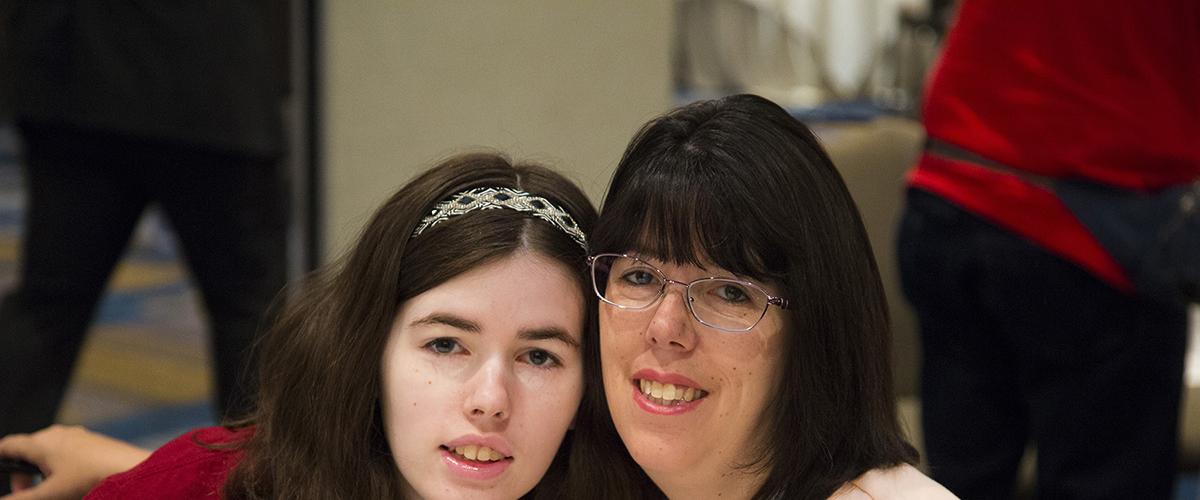Insulin resistance has been recognized for decades as a common feature of type 1 myotonic dystrophy (DM1) and more recently of type 2 myotonic dystrophy (DM2), but it has yet to be fully understood or optimally treated.
Dramatic progress in understanding the molecular pathways underlying DM -- such as the knowledge that the DNA expansions in this disease cause abnormalities in RNA splicing for the insulin receptor -- has occurred in recent years. But there may be more to the insulin story in DM.
Searching for ‘Something More’
Laura Renna, Ph.D., of the IRCCS-Policlinico San Donato in Milan, Italy, has a 2016-1017 research fellowship from MDF and the UK-based Wyck Foundation to try to improve understanding and treatment of DM-related insulin resistance.
“We think that the alternative splicing of the insulin receptor is not the only reason behind insulin resistance in myotonic dystrophy patients,” Dr. Renna says. “We think there is something more. Our goal is to understand what this ‘something more’ is in DM skeletal muscle cells.”
Dr. Renna’s connection to the disease is personal, as her mother and brother are affected by DM1. “My mother has the late-onset form of the disease,” she says, “and my brother has the childhood phenotype and is very affected.” She received her Ph.D. in biomolecular sciences in November 2015, but her research focus has always been on DM.
Identifying Biomarkers, Testing Interventions
Dr. Renna’s research project, “A New Approach to Pathomolecular Mechanisms in Myotonic Dystrophy Insulin Resistance by Nutrigenomics,” will investigate the mechanisms that induce insulin resistance in DM patients and whether they contribute to weakness.
The results are expected to lead to the identification of biomarkers that could become targets for therapeutic intervention. In addition, her research will test the ability of the natural insulin mimetics resveratrol, carnitine and betaine to modify insulin resistance and muscle atrophy in DM.
“Myotonic dystrophy patients are characterized by metabolic dysfunction, such as insulin resistance, hyperinsulinemia, and a high incidence of type 2 diabetes,” Dr. Renna says. “Insulin resistance represents one of the major abnormalities that can lead to cardiovascular disease, and cardiac manifestations are one of the most common features of myotonic dystrophy. Almost 30 percent of DM1 patients die from cardiac failure.”
Insulin resistance and its downstream effects aren’t different in DM patients compared to non-DM patients with this condition, she notes, but the molecular mechanisms that lead to it appear to be.
Dr. Renna and her colleagues will study insulin resistance and test these compounds in muscle biopsy samples derived from the biceps in patients with DM1, DM2 and healthy, age-matched controls, and in cultures of myoblasts and myotubes obtained from their satellite cells.
Special Treatments Needed for DM Patients
A current first-line treatment for insulin resistance in patients with or without DM is the drug metformin [Glucophage], Renna says. “However,” she notes, “metformin can have long-term side effects, such as vitamin B12 deficiency, which can cause neuropathy. Moreover, some other effects have been observed, like liver and kidney alterations.” She says these could be particularly harmful in a multisystem disorder like DM1 or DM2, making the search for better treatments urgent.
Dietary modifications are recommended for DM and non-DM patients with insulin resistance, she notes, but many DM patients “need assistance in following dietary modifications” and may follow them only if the family is on board.
A New Approach with Insulin Mimetics
Dr. Renna’s team believes natural insulin mimetics may offer valuable new approaches to therapy. They will administer insulin mimetic compounds to the cells and then analyze the expression of proteins in the insulin pathway, as well as glucose uptake by the cells.
“In the absence of these insulin mimetic compounds, DM muscle cells have lower glucose uptake,” she says. “We will analyze glucose uptake after administration of the natural compounds, comparing them with the administration of insulin or metformin.” The goals are to find biomolecular markers that can be used to measure therapeutic interventions and ultimately a cure for insulin resistance in myotonic dystrophy.
For betaine and carnitine, Renna says, there have been no trials in humans, but there have been tests on murine muscle cells in vitro.
“It seems they have a positive effect on the activation of the insulin pathway” in these cells, she says, and they will now test them in skeletal muscle cells taken from DM patients.
Resveratrol has been tested in patients with type 2 diabetes who do not have DM. However, it has mainly been tested as an adjunct to the usual therapy, and the trials have been limited to about 12 weeks. In some trials, with these caveats, the drug was helpful. “Additional trials are needed to see whether resveratrol or other insulin mimetic compounds can be used in the treatment of insulin resistance or diabetes,” Renna says.

